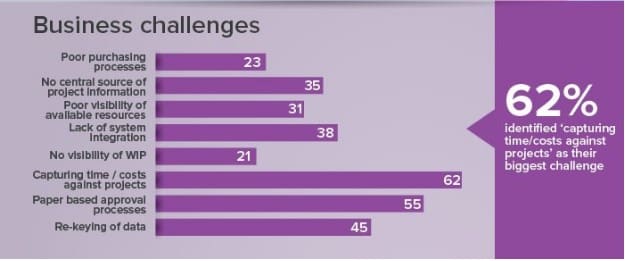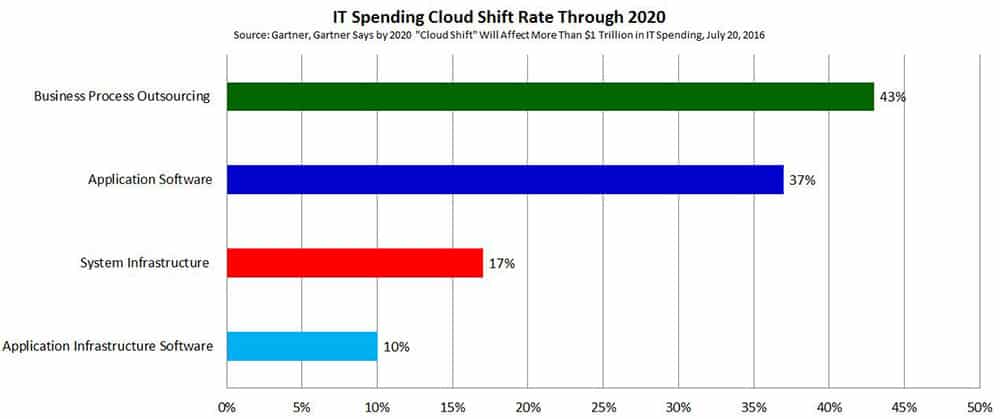
Managing a project can sometimes feel like you’re herding cats.
Project management software can create order out of chaos, and help keep all your ducks (or cats) in a row. It’s one of the most widely used business tools on the market today, and its users range from restaurants to programmers, and even large scale construction projects like renovating and modernizing London Underground.
So, how do you organize your team? Is it a time-suck just to assign menial tasks? Are you stuck exchanging emails with your workers all day? Is your workflow as effective as it possibly can be? At some point every business needs to streamline its process to achieve the highest potential. Use project management software is imperative to finishing projects on time and within budget.
As a matter of fact, according to a 2013 PricewaterhouseCoopers survey, 97% of high-ranking officials believe that project management is crucial to the performance and success of their business.
Though the same report found the use of commercially available project management applications increases performance and boosts growth- almost 45% of project managers today use no software whatsoever.
So, do you think you can successfully manage a project without an app?
Why is Project Management Software Important?
Managing teams and projects via email and Skype groups is challenging in the best case scenario. At times it’s nearly impossible.
If you’ve ever tried it, you know that team members that are not on key email chains are often left in the dark. What’s worse, important emails get buried in overstuffed Gmail inboxes on regular occasions.

So when your employees don’t have a clear idea about who’s working on a certain project or how close the project is to completion, and if your organization of tasks isn’t on point, your work, your deadlines, and ultimately your budget, will suffer.
This happens more often than you think.
According to research conducted by the Standish Group three years ago, less than 33% of all projects were completed on time and on budget. And while we don’t have any more up-to-date surveys, it’s doubtful the situation has improved much since then.
So, let’s say you want to start using PM software. Where do you begin? With so many PM systems out there, how is one to make a pick between all of them?
What are your project management software needs?
Team managers have a metric ton of responsibilities and face too many challenges to count on a daily basis, but what exactly leads one to use PM software?
Well, according to recent findings from The Access Group, some of the most common reasons to use Project Management software include capturing time and/or cost of projects, lack of integration, poor resource management and lack of visibility into work in progress- just to name a few.

Image Source: www.theaccessgroup.com
This leads us to your needs and as a team manager, you want an app that:
- Is easy to set and use
- Doesn’t involve any hidden costs
- Lets you manage your team
- Enables you to see the projects at-a-glance
- Encourages team work for project success
To sum it all up – you should look for an app that has an abundance of team management features, plus an overview of everything, all rolled up into a dashboard that covers every single piece of data you’re interested in.
Of course, the app you chose also has to fulfill the needs of people who are using it as well…
What are your team's project management software needs?
Let’s face it – your team members probably want to move from spreadsheets. And so should you, considering that various studies over the years have shown that almost 90% of them contain human errors (88% to be exact, but that still means almost 9 out of 10 have errors).
Managing your projects with spreadsheets is difficult, rather time-consuming and ultimately inefficient. As an alternative, team members should want an app that:
- Doesn’t require too much training to use
- Allows them to manage both small and large projects
- Lets them choose different methodologies (waterfall, agile or anything in between)
- Is accessible from both the office and their home (so they can work on the go)
- Allows them to have real-time access to their projects and tasks

Three Crucial Features of PM Software
Crucial Feature no. 1: Accessibility
First, you need to pay special attention to the following two features:
- Reports:Reports give you a quick snapshot of every project metric you desire. In most cases you have to manually build them out, however, you can also automate the process.
- Dashboards:Your dashboard gives you a real-time insight into a number of metrics, and allows you to see the state of your project on a single screen. Also, a dashboard only needs to be set up once, and it’s there for the life of your project.
Since telecommuting has become so popular in recent years (some people also like to bring their work home), being able to access project data at any time and any place is crucial.
You can always get a product that is hosted on your own network, meaning it is only available when you and your team members are in the office. This provides some additional security, but cloud-based software has become the norm in the past couple of years.
Although the estimations vary drastically (Gartner, for instance, predicts that the cloud infrastructure will grow almost 37% this year), everyone agrees that cloud usage will definitely grow. And with more services available online, this is surely the way that your team expects to work.

Crucial Feature no. 2: Workflow
If your company is relatively small, or you work for a small agency – a simple, free PM tool is all you need to manage everything, from your budget to your clients. But if you’re working as a part of a larger company, you’ll need to take a couple more things into consideration before making your pick.
You have to be sure the app fits into your overall workflow and is compatible with the other software you’re using. For example, if you need to have your customer profiles connected to your projects, your PM software needs to be compatible with your sales team’s CMR software.
But we’ll talk more about specific software integrations in the next section. At the moment, we need to stay on topic and talk a bit more about workflow.
Did you know that some apps allow you to deactivate other tools? This can gives you less tools to switch between, and presents a more clear view of your project performance.
If you working with a smaller team, you’re probably working on a tight budget, so you’ll be glad to know this also saves you money. Let’s say the PM you choose has budgeting and task management capabilities – there’s no reason to pay for different software with the same functions.
Crucial Feature no. 3: Integrations
So, what about integrations? Should you pay much attention to them? Simply put, the answers to these questions depend on the nature of your workflow.
For example, if you run an organization that works with multiple clients at any given time (like a digital or a PR agency), you’ll need an app that has time-tracking capabilities that allow you to bill your customers accordingly.
Every business has its own distinctive needs – a content marketing institute faces completely different challenges and naturally needs an app that integrates with SEO software. There are literally hundreds of different examples.
But you should be aware that not all PM tools allow you to sync data between multiple applications. Therefore, you should look for ones like Zoho and Asana that do.
And this brings us to the second part of our little guide, where we take a look at some actual project management apps…
Top Project Management Apps
Due to their importance and growing popularity over the years, different developers have designed hundreds and hundreds of different project management apps – and the number is steadily rising.
So if you want to get the most out of these apps, you naturally need to stay updated on the best on market at all times. In order to help you stay on top of things, here’s a quick look at some of the most popular project management apps listed alphabetically.
1. ActiveCollab
Pros
It doesn’t require any downloads and has a great mobile platform; reporting tools are fantastic for managing, estimating, and enabling you to track expenses and payments within the app.
Cons
Since ActiveCollab is a web-based platform, if things go down on their end you can lose access to your projects. Also, project searching and filtering isn’t great, and email alerts aren’t all that helpful.
Who is it for?
ActiveCollab 5.0 is a simple yet powerful project management app that allows both small businesses and large corporations to manage everything from task management to invoicing easily.
Pricing
Small Plan ($25 per month for 5 employees); Medium Plan ($49 per month for 15 employees); Large Plan ($99 per month for 30 employees); Extra Large Plan ($199 per month for 60 employees); Mega Plan ($299 per month for unlimited employees); Self-Hosted Plan ($999 per month for unlimited projects, clients and employees).
2. Asana
Pros
Asana is really flexible. It’s somewhat quick and responsive, and the free version allows you to add up to 15 team members. Their support is above-average. It is feature-rich and has a strong HTML5 design.
Cons
It doesn’t have a desktop app (which maybe a big turn off for some). It’s not ideal for graphic-intensive projects and its uptime and load times have room for improvement.
Who is it for?
The free version design, interactive elements, and member allotment works well for small teams, while the paid version provides additional features needed for more complex project management.
Pricing
Free Package (up to 15 people); Premium Package ($9.99 per employee, per month); Enterprise Package (you’ll need to contact the company for pricing details).
3. Basecamp 3
Pros
This app is really flexible and has a large selection of plug-ins; conversations are streamlined, so they are easy to follow. The desktop and mobile app both work great and it’s quick to start using.
Cons
Some 3rd-party apps like Dropbox and Google drive need additional services to connect; tasks cannot be divided into multiple projects (or teams), and it could use better reporting.
Who is it for?
Basecamp is probably the most well-known app on our list. Its recognition is well deserved, and it’s a great solution for medium and large companies, but the price-tag might be a problem for smaller ones.
Pricing
Free Trial (up to 60 days); Basic Package ($29 per month for internal teams – 100GB of storage); Advanced Package ($79 per month for use with clients – 100GB of storage); Enterprise Package ($3000 per year – 2TB storage).
4. Casual
Pros
Projects on Casual are presented like templates (which will save you so much time). It shows task dependencies on a visual workflow. It’s easy to integrate with multiple users and it’s inexpensive.
Cons
It lacks detailed reporting. It also lacks flexibility (it still can’t be integrated with Slack or other PM tools). When it comes to making sub-tasks, it isn’t perfect and it won’t work for big teams (size of 50+).
Who is it for?
Casual is incredibly intuitive, so it works great for personal projects and for managing projects for small teams. But if you’re managing a large team, lack of flexibility will probably make you look elsewhere.
Pricing
Free Trial (14 days); Personal Package ($9 per person, per month); Group Package ($29 per person, per month); Team Package ($49 per person, per month); Department Package ($99 per person, per month); Enterprise Package ($189 per person, per month).
5. Freedcamp
Pros
The most obvious benefit of Freedcamp is that the app is free for an unlimited number of users. It supports SMS notifications that keeps everyone connected at all times and add-ons aren’t costly.
Cons
It isn’t actually built to handle agile methodologies; although it covers traditional project management, it doesn’t have gnat charts and it doesn’t allow you control who views and edits projects.
Who is it for?
Since there’s no limit to the number of users that can work on the platform, the free version is perfect for micro companies and small business that are working on a tight budget.
Pricing
Free Package (unlimited number of users); Lite Package ($3.99 per month – Google Drive integration, Subtasks Pro, etc.); Business Package ($8.99 per month per user per month – Tam Wikis, Issue Tracker, etc.); Enterprise Package (you need to contact the vendor for pricing details).
6. Microsoft Projects
Pros
It includes a full list of task management features (from grouping tasks by project to setting priorities). It allows you to track burn rates to minimize any costly surprises and allows you to build custom reports.
Cons
Microsoft Projects doesn’t allow the management of a product backlog. The user-friendliness isn’t great and it takes some training to get used to the software. Plus the pricing can be an issue for some.
Who is it for?
It has plenty of features that are popular with project managers, but seeing how the app is quite costly and rather difficult to use, it’s recommended for larger teams and experienced professionals.
Pricing
Project Lite ($7 per employee per month); Project Pro for Office 365 ($25 per employee per month); Project Standard ($589.99 for unlimited users); Project Professional ($1,159.99 for unlimited users).
7. Podio
Pros
The level of customization with this app is great, which makes Podio a highly-customizable tool. The company updates software on a regular basis and the app scales easily for a growing business.
Cons
While there’s a free version of the app, it’s really limited; it doesn’t have any time-tracking capabilities. There are no image markup or PDF tools, and it has a lackluster permission structure.
Who is it for?
Features like social intranet and CRM (not to mention the price) make Podio a great choice for medium-sized and large-sized companies alike.
Pricing
Free Package (up to five employees); Basic Package ($9 per employee, per month); Plus Package ($14 per employee, per month); Premium Package ($24 per employee, per month).
8. Trello
Pros
Trello is primarily an app (not a site) and you can use it on any screen size. Real time updates are surprisingly fast. Creating tasks and assigning someone to them is simple and it’s completely free.
Cons
It doesn’t have a calendar or a gnat chart. It only allows you to write simple descriptions and not documents or wiki about boards and it needs a stronger integration with other tools.
Who is it for?
Unlike Microsoft Projects, Trello is completely free, and user-friendliness is one of its main attractions, so it’s great for smaller companies with little to no experience.
Pricing
Free Package (unlimited members, boards, lists, checklists and attachments); Business Class Package ($9.99 per employee per month – unlimited Power-Ups and more integration); Enterprise Package ($20.83 per user per month when paid annually – personalized onboarding assistance, better support, 2-factor authentication, etc.)
9. Wrike
Pros
Wrike supports an unlimited number of projects (which is great for larger organizations). It includes time-tracking for all of your projects and it offers fully-customizable reports and dashboards.
Cons
The interface can be confusing for some; stronger integration with other tools is needed. Designing a long-term task calendar can be difficult and the mobile app is inferior to the desktop version.
Who is it for?
This cloud-based app is suitable for the needs of both small and medium businesses, but larger companies can easily find solutions in the same price-range that will satisfy their needs.
Pricing
Free Package (unlimited cards, lists, boards, members, etc.); Business Class Package ($9.99 per month – bigger file attachments, more integration); Enterprise Package (by quote – onboarding, file encryption, 2-factor authentication, etc.).
10. Zoho Projects
Pros
Zoho includes a number of integrations with other services. It’s extremely feature rich. It’s quite easy to setup and use (the interface is rather responsive) and it offers a good value.
Cons
If you want to have bug-tracking, you’ll have to spend a few additional dollars. The cloud support isn’t all that great and the program doesn’t even have a drag-and-drop function.
Who is it for?
Zoho is basically intended for SMBs with multiple departments that want to keep their documents segmented and well organized, but it also works fine for large businesses across every industry.
Pricing
Free Plan (one project); Express Package ($25 per month for 20 projects); Premium Package ($50 per month for 50 projects); Enterprise Package ($80 per month for unlimited projects).
Key Takeaways
First you need to consider all the features that the project management software should include. You should also take the tools you currently use and your company’s framework into consideration.
Remember to check for data integration and synchronization opportunities. The last element in your decision making process should be the app’s price, simply because a software’s features and capabilities are far more important than the price.
According to Information Week’s Enterprise Project Management Survey, roughly 87% of high-performing companies use some kind of PM software – and for a good reason.
So join the winning team and start using an efficient project management tool as soon as possible.
Frequently Asked Questions
What are the key features to look for in project management software?
Effective project management software should provide comprehensive reporting and analytics capabilities, including:
- Project Progress Tracking: The software should generate reports that track project progress, including completed tasks, pending tasks, and overall project status. These reports allow stakeholders to assess project health and make informed decisions.
- Resource Allocation and Utilization: Look for software that provides insights into resource allocation, helping you identify bottlenecks or underutilized resources. This data enables smarter resource management and improves overall project efficiency.
- Financial Analysis: Advanced project management software can offer financial analytics, allowing you to track project costs, budgets, and profitability. These features help monitor project financials and make data-driven budgeting decisions.
- Project progress tracking reports
- Resource allocation and utilization insights
- Financial analysis for cost and budget monitoring
How should I assess the scalability of project management software?
To evaluate the scalability of project management software, consider the following factors:
- User Limits: Check if the software imposes any restrictions on the number of users that can access and collaborate on projects. Choose a solution that can accommodate the current and future size of your team.
- Project Size: Assess whether the software can handle larger and more complex projects as your organization grows. Look for features like resource management, portfolio management, and the ability to handle multiple concurrent projects.
- Integration Capability: Consider whether the software integrates with other tools and software your team uses. Scalable project management software should be able to connect seamlessly with popular applications like CRM systems, accounting software, or collaboration platforms.
Top 3 crucial pieces of information:
- User limit and scalability options
- Project size handling capabilities
- Integration capability with other tools and software
What security measures should project management software offer?
When choosing project management software, ensure it includes robust security measures:
- User Access Controls: The software should allow you to set different permission levels for users to control access to sensitive information. This ensures that only authorized individuals can view or modify specific project data.
- Data Encryption: Look for software that encrypts data, both during transmission and storage. This helps protect sensitive project information from unauthorized access or potential breaches.
- Data Backup and Recovery: The software should offer regular data backups and secure storage, along with the ability to restore data if unexpected incidents or system failures occur.
Top 3 crucial pieces of information:
- User access controls for data security
- Data encryption during transmission and storage
- Regular data backups and recovery options
What reporting and analytics features are important in project management software?
Effective project management software should provide comprehensive reporting and analytics capabilities, including:
- Project Progress Tracking: The software should generate reports that track project progress, including completed tasks, pending tasks, and overall project status. These reports allow stakeholders to assess project health and make informed decisions.
- Resource Allocation and Utilization: Look for software that provides insights into resource allocation, helping you identify bottlenecks or underutilized resources. This data enables smarter resource management and improves overall project efficiency.
- Financial Analysis: Advanced project management software can offer financial analytics, allowing you to track project costs, budgets, and profitability. These features help monitor project financials and make data-driven budgeting decisions.
Top 3 crucial pieces of information:
- Project progress tracking reports
- Resource allocation and utilization insights
- Financial analysis for cost and budget monitoring
How should I evaluate the ease of use of project management software?
To assess the ease of use of project management software, consider the following factors:
- User Interface: The software should have an intuitive and user-friendly interface. Look for a clean design, clear navigation, and a logical arrangement of features and menus.
- Learning Curve: Determine the complexity of the software and its learning curve. Ideally, it should be easy for team members to adopt and start using without extensive training.
- Mobile Accessibility: In today’s mobile-centric world, check if the software offers mobile apps or a responsive web version. This ensures that team members can access and manage projects on the go.
Top 3 crucial pieces of information:
- Intuitive and user-friendly interface
- Manageable learning curve for easy adoption
- Mobile accessibility through apps or responsive web version





